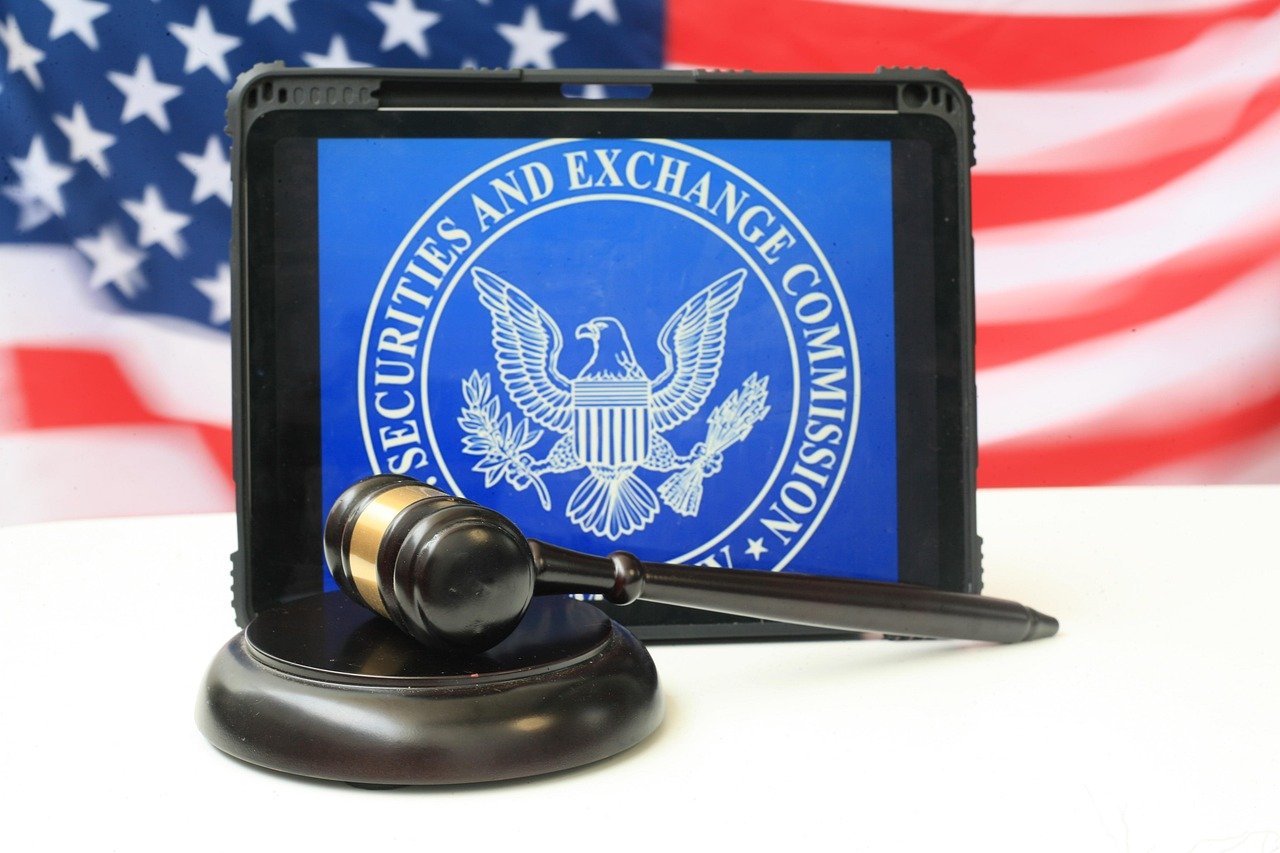The U.S. Securities and Exchange Commission (SEC) has introduced a major shift in crypto accounting with the release of Staff Accounting Bulletin No. 122 (SAB 122) on January 23, 2025. This bulletin officially rescinds SAB 121, marking the end of one of the most controversial financial reporting requirements for digital asset custodians and exchanges. By eliminating blanket liability recognition, the SEC is now aligning crypto custody accounting with established financial reporting standards under U.S. GAAP and IFRS.
The move signals a return to a risk-based assessment, allowing companies to evaluate liability obligations based on actual exposure rather than automatically classifying custodied assets as liabilities. This shift is expected to reduce compliance burdens, encourage institutional adoption of crypto custody services, and provide greater financial transparency.

Why SAB 121 Created Problems for Crypto Custodians
Since its introduction in 2022, SAB 121 mandated that companies holding crypto assets on behalf of clients recognize them as liabilities on their balance sheets. While intended to enhance transparency regarding custody risks, the rule had several unintended consequences.
First, it led to inflated balance sheets, making custodians appear riskier than they actually were. This discouraged banks and traditional financial institutions from entering the crypto custody market due to increased capital reserve requirements. Additionally, the rule imposed unnecessary compliance challenges, forcing crypto firms to adopt a financial reporting model that deviated from standard accounting principles.
Rather than clarifying risk exposure, SAB 121 introduced confusion, making it difficult for companies to distinguish between assets held on behalf of clients and actual liabilities. As a result, institutional players hesitated to engage with crypto custody services, limiting industry growth and innovation.
SAB 122: A More Practical, Risk-Based Accounting Framework
The introduction of SAB 122 marks a return to principles-based accounting, where financial treatment is determined by an entity’s risk exposure rather than a blanket requirement. This change brings crypto custody accounting back in line with traditional financial reporting principles, reducing unnecessary distortions while ensuring that risks are still disclosed appropriately.
One of the most notable improvements is the shift to risk-based liability recognition. Under SAB 122, companies are no longer required to automatically recognize custodial assets as liabilities. Instead, they must assess their risk exposure and determine whether a liability should be recorded under ASC 450-20 (U.S. GAAP) or IAS 37 (IFRS), both of which address contingent liabilities. This means custodians will only report liabilities if there is an actual risk of loss.
Additionally, SAB 122 enhances disclosure requirements, ensuring that companies provide clear and meaningful financial statements without imposing unnecessary complexity. Businesses will still be required to report custody-related risks, but these disclosures will now be based on actual exposure rather than theoretical assumptions.
Who Is Affected & What Will Change?
The adoption of SAB 122 impacts a range of financial and crypto-related entities, each of which will experience significant changes in how they approach accounting for digital assets.
- Crypto Custodians & Exchanges – No longer required to automatically classify customer-held crypto as liabilities, making financial reporting more accurate and reflective of actual risks.
- Financial Institutions & Banks – With capital reserve constraints easing, more traditional financial institutions may re-enter the crypto custody space, potentially increasing institutional adoption of digital assets.
- Web3 Companies Managing Third-Party Funds – These firms must implement clear internal controls to evaluate and document loss contingencies, ensuring compliance with the updated accounting framework.
- Institutional Investors & Corporate Treasuries – The shift toward a structured, predictable reporting framework will likely increase institutional engagement, as financial statements will now better reflect actual business operations.
This change is expected to remove regulatory uncertainty and encourage both traditional finance and Web3 businesses to expand their crypto-related services.
Ensuring Compliance Under SAB 122
While SAB 122 simplifies crypto accounting by eliminating unnecessary liability recognition, businesses must still maintain audit readiness through structured financial processes. This includes automated transaction tracking to log every asset movement accurately, real-time reconciliation to ensure custodial holdings align with accounting records, and risk contingency assessments in compliance with ASC 450-20 or IAS 37 to determine when liabilities should be recognized. Additionally, transparent financial disclosures are essential for providing clarity on risk exposure without adding unnecessary complexity. To navigate these requirements efficiently, companies should leverage automation tools for reconciliation, financial reporting, and compliance tracking, reducing manual errors and enabling finance teams to focus on strategic growth.
Final Thoughts: A Positive Shift for Crypto Finance
The SEC’s decision to rescind SAB 121 and introduce SAB 122 represents a significant improvement for the crypto industry, bringing long-overdue alignment with global financial reporting standards.
By allowing companies to apply professional judgment in assessing risk, rather than imposing prescriptive accounting rules, the SEC has created a more sustainable framework for digital asset custody. These changes will likely accelerate institutional adoption, simplify compliance, and foster greater transparency in financial reporting.
As crypto custody services continue to evolve, the transition to SAB 122 sets the stage for a more structured, investor-friendly, and growth-oriented regulatory environment. With fewer obstacles to entry, the crypto industry is now better positioned for long-term success and broader financial integration.
The U.S. Securities and Exchange Commission (SEC) has introduced a major shift in crypto accounting with the release of Staff Accounting Bulletin No. 122 (SAB 122) on January 23, 2025. This bulletin officially rescinds SAB 121, marking the end of one of the most controversial financial reporting requirements for digital asset custodians and exchanges. By eliminating blanket liability recognition, the SEC is now aligning crypto custody accounting with established financial reporting standards under U.S. GAAP and IFRS.
The move signals a return to a risk-based assessment, allowing companies to evaluate liability obligations based on actual exposure rather than automatically classifying custodied assets as liabilities. This shift is expected to reduce compliance burdens, encourage institutional adoption of crypto custody services, and provide greater financial transparency.
Securities and Exchange Commission
Why SAB 121 Created Problems for Crypto Custodians
Since its introduction in 2022, SAB 121 mandated that companies holding crypto assets on behalf of clients recognize them as liabilities on their balance sheets. While intended to enhance transparency regarding custody risks, the rule had several unintended consequences.
First, it led to inflated balance sheets, making custodians appear riskier than they actually were. This discouraged banks and traditional financial institutions from entering the crypto custody market due to increased capital reserve requirements. Additionally, the rule imposed unnecessary compliance challenges, forcing crypto firms to adopt a financial reporting model that deviated from standard accounting principles.
Rather than clarifying risk exposure, SAB 121 introduced confusion, making it difficult for companies to distinguish between assets held on behalf of clients and actual liabilities. As a result, institutional players hesitated to engage with crypto custody services, limiting industry growth and innovation.
SAB 122: A More Practical, Risk-Based Accounting Framework
The introduction of SAB 122 marks a return to principles-based accounting, where financial treatment is determined by an entity’s risk exposure rather than a blanket requirement. This change brings crypto custody accounting back in line with traditional financial reporting principles, reducing unnecessary distortions while ensuring that risks are still disclosed appropriately.
One of the most notable improvements is the shift to risk-based liability recognition. Under SAB 122, companies are no longer required to automatically recognize custodial assets as liabilities. Instead, they must assess their risk exposure and determine whether a liability should be recorded under ASC 450-20 (U.S. GAAP) or IAS 37 (IFRS), both of which address contingent liabilities. This means custodians will only report liabilities if there is an actual risk of loss.
Additionally, SAB 122 enhances disclosure requirements, ensuring that companies provide clear and meaningful financial statements without imposing unnecessary complexity. Businesses will still be required to report custody-related risks, but these disclosures will now be based on actual exposure rather than theoretical assumptions.
Who Is Affected & What Will Change?
The adoption of SAB 122 impacts a range of financial and crypto-related entities, each of which will experience significant changes in how they approach accounting for digital assets.
- Crypto Custodians & Exchanges – No longer required to automatically classify customer-held crypto as liabilities, making financial reporting more accurate and reflective of actual risks.
- Financial Institutions & Banks – With capital reserve constraints easing, more traditional financial institutions may re-enter the crypto custody space, potentially increasing institutional adoption of digital assets.
- Web3 Companies Managing Third-Party Funds – These firms must implement clear internal controls to evaluate and document loss contingencies, ensuring compliance with the updated accounting framework.
- Institutional Investors & Corporate Treasuries – The shift toward a structured, predictable reporting framework will likely increase institutional engagement, as financial statements will now better reflect actual business operations.
This change is expected to remove regulatory uncertainty and encourage both traditional finance and Web3 businesses to expand their crypto-related services.
Ensuring Compliance Under SAB 122
While SAB 122 simplifies crypto accounting by eliminating unnecessary liability recognition, businesses must still maintain audit readiness through structured financial processes. This includes automated transaction tracking to log every asset movement accurately, real-time reconciliation to ensure custodial holdings align with accounting records, and risk contingency assessments in compliance with ASC 450-20 or IAS 37 to determine when liabilities should be recognized. Additionally, transparent financial disclosures are essential for providing clarity on risk exposure without adding unnecessary complexity. To navigate these requirements efficiently, companies should leverage automation tools for reconciliation, financial reporting, and compliance tracking, reducing manual errors and enabling finance teams to focus on strategic growth.
Final Thoughts: A Positive Shift for Crypto Finance
The SEC’s decision to rescind SAB 121 and introduce SAB 122 represents a significant improvement for the crypto industry, bringing long-overdue alignment with global financial reporting standards.
By allowing companies to apply professional judgment in assessing risk, rather than imposing prescriptive accounting rules, the SEC has created a more sustainable framework for digital asset custody. These changes will likely accelerate institutional adoption, simplify compliance, and foster greater transparency in financial reporting.
As crypto custody services continue to evolve, the transition to SAB 122 sets the stage for a more structured, investor-friendly, and growth-oriented regulatory environment. With fewer obstacles to entry, the crypto industry is now better positioned for long-term success and broader financial integration.
Georg Brameshuber is an Austrian tax expert, legal scholar, and entrepreneur specializing in crypto taxation, regulation, and wealth management. As the co-founder of Validvent, he leads the Validvent team, delivering crypto tax accounting, strategic advisory services, and crypto wealth management.
Previously, Georg worked in audit and financial compliance at KPMG Austria and ERBER Group, specializing in risk management, regulatory compliance, and corporate governance for multinational firms.
Beyond his corporate roles, Georg has significantly contributed to blockchain policy and regulation, holding Board positions at Blockchain for Europe (BC4EU), the Digital Asset Association Austria (DAAA) and the European Crypto Initiative (EUCI).
Georg is also active in academia and is a thought leader in the blockchain space. He is regularly speaking at conferences and has taught at institutions. Previously held a teaching and research position in law at the University of Vienna (equivalent to Assistant Professor in the U.S.).


